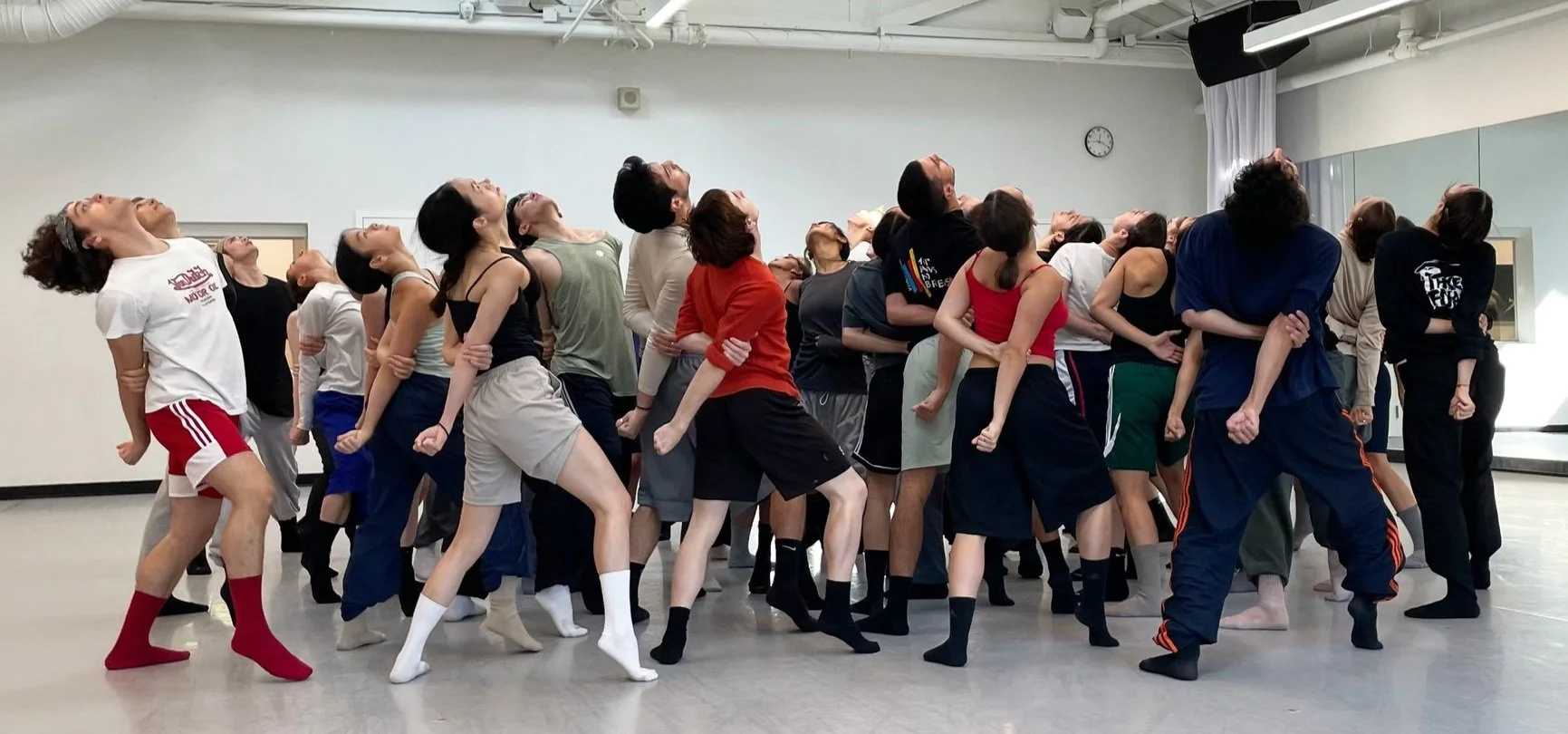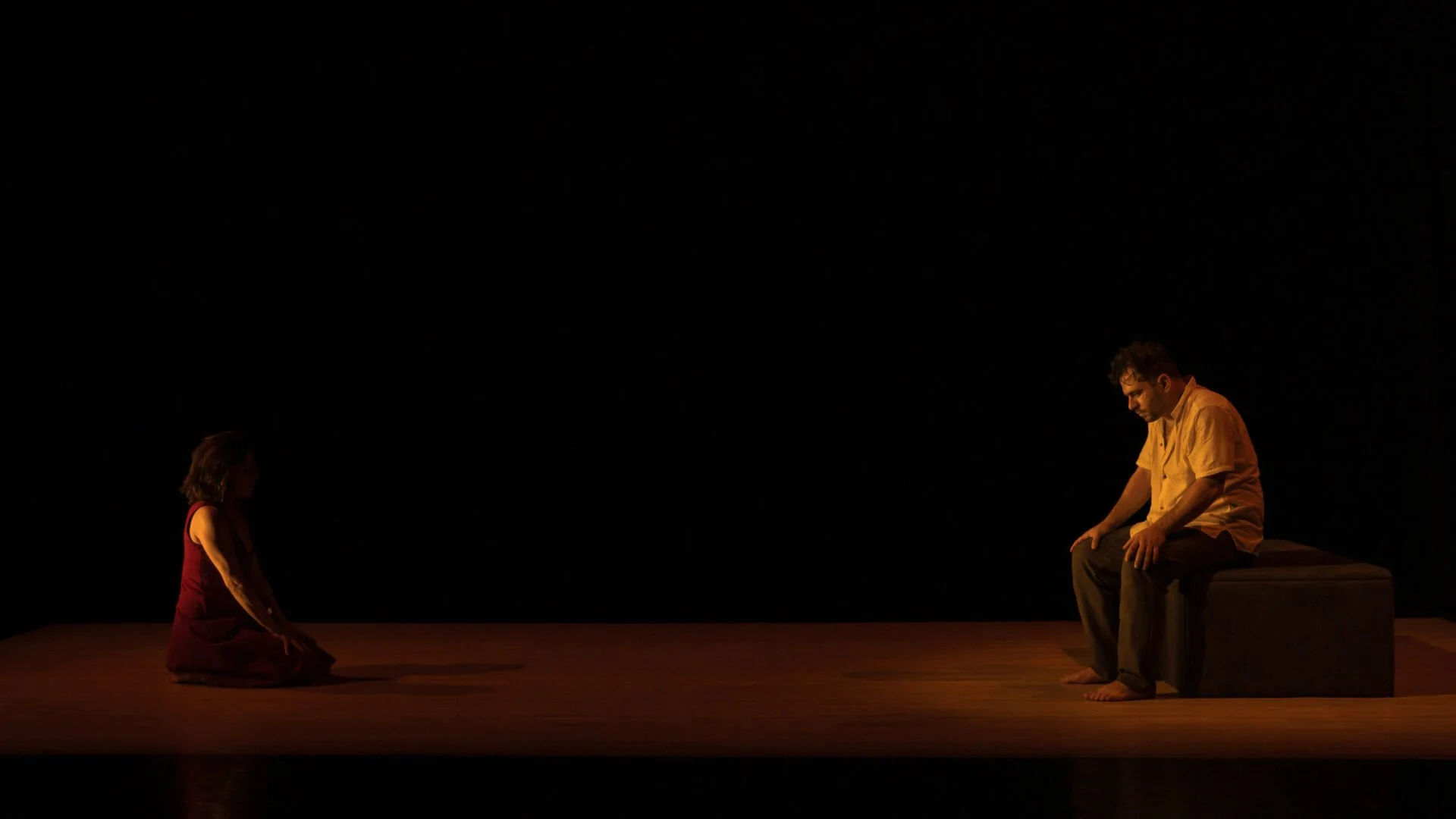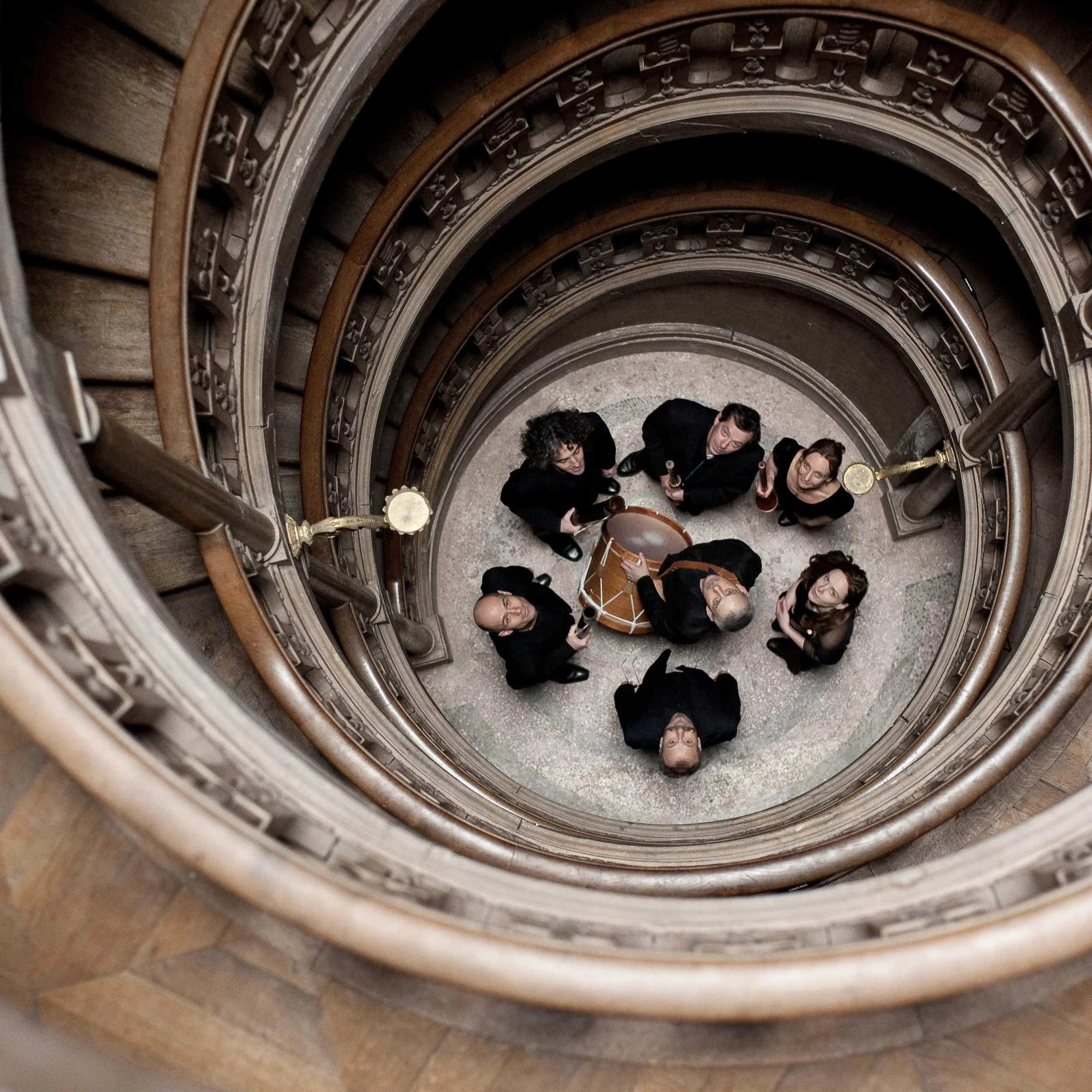Ballet BC's 50-dancer BOLERO X becomes an act of unity and humanity in the face of division and inhumanity
Israeli choreographer and Batsheva alumnus Shahar Binyamini grabs the last ticket out to bring Vancouver his epic work set to Ravel’s masterpiece
Ballet BC and Arts Umbrella dancers rehearse BOLERO X. Photo by Benjamin Peralta
Shahar Binyamini
Ballet BC presents HERE from November 2 to 4 at the Queen Elizabeth Theatre
THAT ISRAELI choreographer Shahar Binyamini is preparing an epic 50-dancer production of his BOLERO X for Ballet BC is a huge challenge. That he made it here at all is an even bigger feat.
The alumnus of Israel’s famed Batsheva Dance Company was in Tel Aviv when Hamas made its surprise attack on civilians and war erupted.
“It took me five or six days to realize it’s much more meaningful for me to do what I do than to stay in Tel Aviv and take shelter,” the artist tells Stir on a break from rehearsals at Ballet BC’s Granville Island studios, where he’s been safely ensconced since Monday. “At first, you don’t want to leave when your house is burning. You want to stay and be present with your family and friends. But then I had a conversation with a friend who is a little bit older than me, and he said, ‘You would serve your country and your friends and family if you leave and continue to create and to talk to international audiences.’ And I realized I just need to change my perspective and to understand that what I do is not something to take for granted. There is a lot of power in it. I just have to own that power and understand why I do it, and use it constructively.”
So, a week and a half ago, the artist decided to leave his country, buying what he says was literally the last ticket out on a flight to Athens. From there he made his way to Canada via Frankfurt, in time to put the finishing touches on BOLERO X’s world premiere before it opens the Ballet BC season as part of the HERE program next week.
There’s no escaping the added new resonance to Binyamini’s piece, a grand, swirling exploration of unity and connection set to Maurice Ravel’s iconic, crescendoing Bolero. Harnessing the power of repetition in the 1928 score, the choreographer has conjured a sweeping, visceral statement on what brings humankind together as a group, despite our differences as unique individuals. The result is hypnotic and arresting, limbs pumping and rippling in unison, movement slowly layering, building and building in the same way the orchestration does.
“It became about how to deal with repetition, but don’t experience it as repetition,” explains Binyamini, who found a new appreciation for existing in the moment creating BOLERO X. “Every time we do it we really present it like it is the first time.”
Binyamini is comfortable working with 50 people in a single room—with the Ballet BC core boosted by dozens of dancers from Arts Umbrella—and has been orchestrating them into a single pulsing, vibrating human organism on stage.
Ballet BC and Arts Umbrella dancers rehearsing BOLERO X.
“I was really excited about it—I was never anxious or uncomfortable about that,” he shrugs. “It makes me also very present because there’s so many people in the room that can dig into the research with me, and we can make mistakes because we’re playing together in the studio. And the more we do it together the more power we feel—and the more empowering it feels. It’s less about perfection and more about exploration and self expression. I wish to work with an even bigger group to spread this approach to dance!”
As a dancer, Binyamini spent years inside the creations of Batsheva greats Ohad Naharin and Sharon Eyal, and he has travelled the globe teaching their Batsheva company’s uniquely explosive, instinctive movement language, called Gaga. But BOLERO X, he says, has changed the way he works as a choreographer and brought him back to the pure essence of dance. “I was always into warmth—like, what does that mean to be physically warm in the universe with each other and what does it mean to create intimacy in a performance?” he says. “But Bolero was this great moment in my career where I could clear a lot of things—there’s something about this music that taught me about dance. That’s why, simply, this piece feels like a celebration of dance.”
Ballet BC’s Rae Srivastava and Kiana Jung rehearsing BOLERO X. Photo by Benjamin Peralta
Sending all these bodies into motion onstage is a release for Binyamini after enduring one of the most painful periods in Israeli history. And the embodiment of joy, power, and celebration—the “warmth” he is reaching for in this mesmerizing work—feels like an act of resistance against the violence. A massive gesture of humanity in the face of inhumanity.
“It feels more meaningful than ever to work on it, and to physically be here and to finish the piece—and to also be here for the talk onstage beforehand,” he says. “These were crimes against humanity. The war they’re making is to destroy the most basic human trust and to create chaos—and personally I don't feel I can create or make art inside chaos in a chaotic world. What I feel that I can do is to continue to build these bridges into the human, these channels into the humane, in order to continue to create trust again. And to build trust with the people I work with in the studio, with the people that come to see the work. It sounds like so little in the middle of all of that. But actually it’s very meaningful.”

















